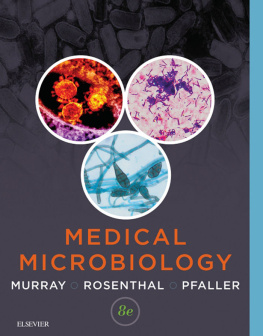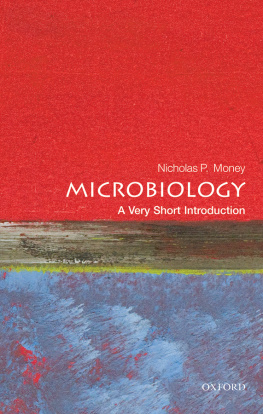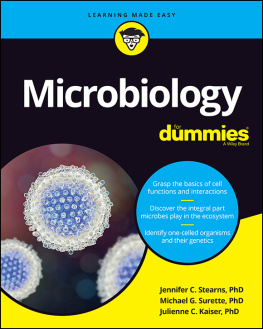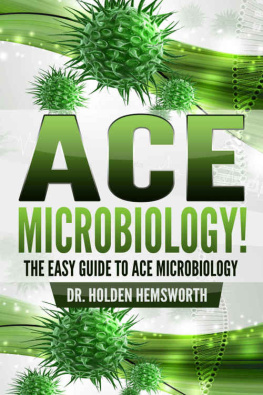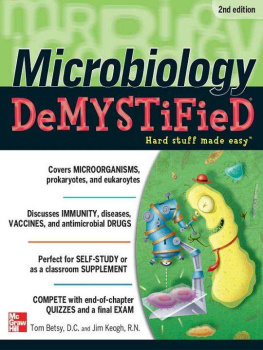Microbes are divided into two divisions. Acellular infectious agents: Prions, viruses and cellular microorganisms. The cellular microorganism is further divided into two divisions. Prokaryotes: Archea, Bacteria, and Eukaryotes: Algae, fungi, and protozoa.
Nitrogen-fixing bacteria that live on or near the roots of legumes convert the nitrogen gas in the air into ammonia into the soil. Nitrates then replenish the soil nutrients and the nitrogen gas returns to the air.
Tiny living organisms such as algae are eaten by small fish, small fish are eaten by larger fish, the larger fish is consumed by a human being.
An infectious disease caused when a pathogen colonizes a persons body. Next, the pathogen causes disease. This type of disease is known is an infectious disease. Examples: M R S A infection, Gas gangrene. Microbial intoxication is caused when a pathogen produces a toxin in vitro. A person ingests the toxin. The toxin causes a disease. This type of disease is known as a microbial intoxication. Examples: Staphylococcal food poisoning. Foodborne botulism.
"1. An illustration shows a sick rat. The text reads the microorganism must always be found in similarly diseased animals but not in healthy ones. 2. An illustration shows a culture sample is collected in the petri dish. The text reads the microorganism must be isolated from a diseased animal and grown in pure culture. 3. An illustration shows cultured organism is injected to healthy rat. The text reads the isolated microorganism muse causes the original disease when inoculated into a susceptible animal. 4. An illustration shows a culture sample is collected in the petri dish. The text reads the microorganism can be re-isolated from the experimentally infected animal."
An illustration shows a person holding 1-meter scale. The table shows the interrelationship among the units. There are five columns: Contains, centimeters, millimeters, micrometers, nanometers. The row entries are as follows: Row 1: 1 meter, 100, 1000, 1000,000, 1000,000,000. Row 2: 1 centimeter, 1, 10, 10000, 10,000,000. Row 3. 1 millimeter, no data, 1, 1000, 1000,000. Row 4. 1 micrometer, no data, no data, 1, 1000. Row 5. 1 nanometer, no data, no data, no data, 1.
The labels smaller to bigger are as follows: Poliovirus, influenza virus, Herpes virus, Poxvirus, Chlamydia elementary body, and staphylococcus.
"A. A photo shows a man viewing through Leeuwenhoeks microscope by holding very close to his eye. B. A photo shows handwritten text and drawing indicating the different types of bacteria observed through Leeuwenhoeks microscope."
Microbes are divided into two Acellular which includes viroids, prions, viruses, and cellular. Cellular is divided into two Prokaryotes and Eukaryotes. Prokaryotes include archaea, bacteria, and cyanobacteria. Eukaryotes include algae, protozoa, and fungi.
The labeled parts are as follows: Cell membrane, centriole, cytosol, lysosome, rough endoplasmic reticulum, vesicle, ribosomes, peroxisome, mitochondrion, microvilli, cilia, smooth endoplasmic reticulum, nucleus, nucleolus, nuclear membrane, and Golgi apparatus.
N shows the nucleus, P shows the nuclear pores, M shows the mitochondrion and V shows the vacuole.
Cell walls present in plants, algae, fungi, and most bacteria. Cell wall absent in animals, protozoa, and mycoplasma species.
The labels are as follows: The outer layer is labeled as capsule followed by a cell wall, cell membrane. The inner area is labeled as cytoplasm followed by ribosomes, inclusion, plasmid, and chromosome. A hair-like structure on the surface of the cell is labeled as sex pilus. Shorter pili are labeled as fimbriae. A long whip-like protrusion at the bottom of the cell is labeled as flagella.
Bacterium consists of a cell wall, chromosome, and plasmid. The chromosome refers to a circular, double-stranded D N A with 3000 genes, a single copy per cell, and highly folded in the cell. The plasmid refers to a circular, double-stranded D N A with 5 to 100 genes, 1 to 20 copies per cell.
Peptidoglycan consists of glycan strands that are cross-linked by peptides. The glycan strand is composed of alternating units of N-acetylglucosamine and N-acetylmuramic acid forming a crystal lattice.
Gram-negative on the left has an outer membrane coated with lipopolysaccharides and an inner cytoplasmic membrane separated by a thin peptidoglycan layer, which is bound to the outer membrane by lipoproteins. Gram-positive cell walls on the right have a thick peptidoglycan layer and an inner cytoplasmic membrane.
"A. An illustration shows the capsulated bacteria. B. The photomicrographic image shows the capsulated bacteria in which capsules are seen as unstained around the bacterial cells."
Peritrichous bacterium shows flagella all over the surface. Lophotrichous bacterium shows flagella at one end. Amphitrichous bacterium shows one flagellum at each end. Monotrichous bacterium shows one flagellum at one end.
"A. A micrographic image shows gram-stained bacteria with spores at one terminal indicated by arrow marks. B. A micrographic image shows gram-stained bacteria with spores at both terminals indicated by arrow marks."
Binary fission shows one parent cell is split into half by D N A replication forming two separate daughter cells.
The species are divided into bacteria, archaea, and Eucarya. The bacteria are classified as Aquifex, thermotoga, bacteroides cytophaga, planctomyces, cyanobacteria, proteobacteria, spirochetes, gram positives, and green filamentous bacteria. The Archea are classified into thermoproteus pyrodicticum, T. celer, methanococcus, methanobacterium, methanosarcina, and halophiles. The Eucarya are classified into diplomonads, microsporidia, trichomonads, flagellates, ciliates, plantae, fungi, Animalia, myxomycota, and entamoebae.
"R N A viruses are divided into nonenveloped and enveloped. The nonenveloped is divided into single-stranded positive-sense and double-stranded. The single-stranded positive-sense consists of Astroviruses, caliciviruses, and picoR N Aviruses. Double-stranded consists of Reoviruses and rotaviruses. The enveloped is divided into single-stranded positive-sense, single-stranded negative-sense, and Retrovirus. The single-stranded positive-sense consists of Togaviruses, flaviviruses, and coronaviruses. The retrovirus consists of lentiviruses and oncoviruses. Single-stranded negative-sense is further divided into linear and segmented. Linear consists of Rhabdoviruses and Paramyxoviruses. Segmented consists of Arenaviruses, Bunyaviruses, and Orthomyxoviruses. D N A viruses are divided into nonenveloped and enveloped. The nonenveloped is divided into single-stranded linear consists of parvoviruses. Double-stranded linear consists of Adenoviruses. Double-stranded circular consists of Papillomaviruses and Polyomaviruses. The enveloped is divided into double-stranded linear consists of Herpesviruses, poxviruses. Double-stranded circular consists of HepaD N Aviruses. "
"A. An illustration shows the nucleocapsid of a helical virus with nucleic acid in the center and an interlocking subunit of capsid with capsomere. B. An illustration shows the nucleocapsid of an icosahedral virus with nucleic acid in the center and capsids form a geometric shape with flat sides. "
"A. An illustration shows an enveloped helical virus in which the nucleic acid and capsid are arranged in a spiral form with proteins in the envelope. B. An illustration shows an enveloped icosahedral virus in which the nucleic acid present in the center and the capsid is arranged in a hexagon shape with protein in the envelope."
"1. Virus-specific glycoproteins are synthesized and transported to the host cell membrane. 2. The cytoplasmic domains of the membrane proteins bind nucleocapsids. 3. A nucleocapsid is enveloped by the host cell membrane. 4. The host cell membrane provides the viral envelope by a process of budding. 5. The enveloped virion is released from the host cell."
Next page


